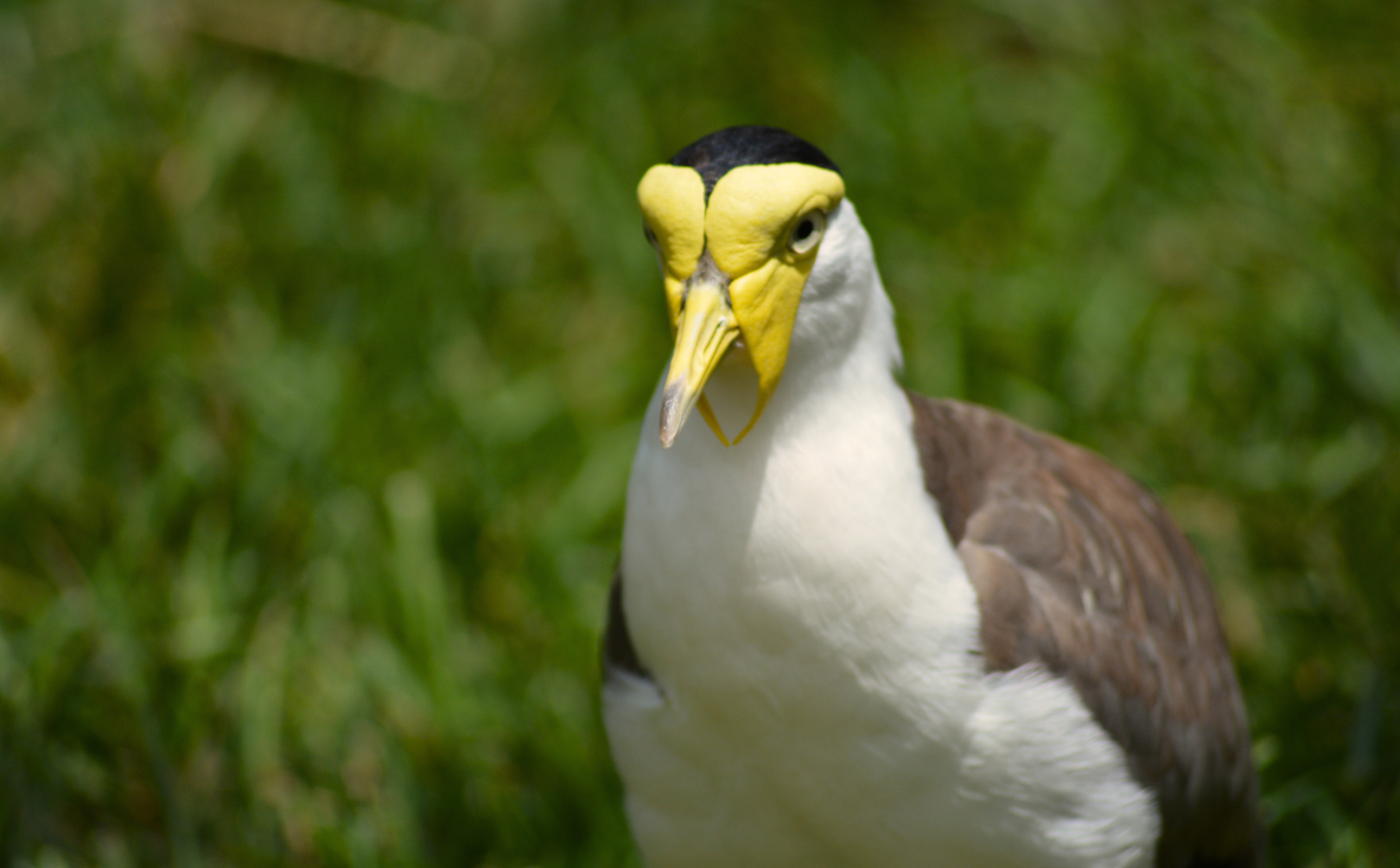I LIVE IN AUSTRALIA
The masked lapwing is native to marshes, beaches, and grasslands throughout Australia, New Zealand, and New Guinea.
I AM AN INSECTIVORE
The masked lapwing’s diet consists of insects, larvae, and various worms. This bird species spends a majority of its time on the group searching for food.
MASKED LAPWINGS ARE SOCIAL
Masked lapwings are somewhat social. They are often on their own when searching for food, but will occasionally spend time in small groups. They are monogamous birds and will spend their whole lives with one mate.
AMAZING ADAPTATIONS
Native Australians once said that masked lapwings carried a spear, and they were close to the truth. Masked lapwings, also called spur-winged plovers, have sharp yellow spurs on the “elbow” of their wings. They use these spurs to scare predators by flying directly at them, but they rarely ever use the spurs for anything other than looks. Lapwings swoop at their predators more often when defending their nests. They also pretend to have broken wings to lure the predators away from their chicks.
HELPING THE MASKED LAPWING IN THE WILD
The masked lapwings at the Fort Wayne Children’s Zoo are enrolled in the Species Survival Plan (SSP). SSP is a program implemented by the Association of Zoos and Aquariums (AZA) to help ensure a genetically viable population exists.
I AM IMPORTANT TO MY ECOSYSTEM
As an insectivore, masked lapwings help keep the Australian insect populations under control.

